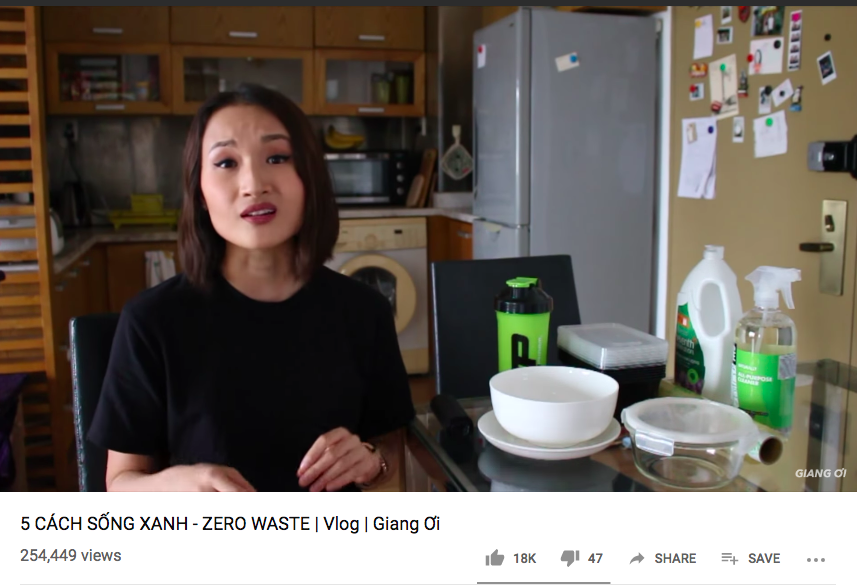Millennials and the “Zero Waste” movement
- Trang Nguyen

- Jul 23, 2019
- 4 min read

“Millennials” is the generation that created a lot of turning points compared to their predecessors, generation X and Baby Boomers, one of which is the attitude towards the living environment. Perhaps never before, environmental problems have become as hot as now, attracting special attention from the community. Since then, new terms in this field have been born in turn, among which it is impossible not to mention "Zero Waste".
So what is "Zero Waste"?
Within just a few years, when environmental headlines ran across media channels, the new issue was pushed to an alarming level and received more feedback from the community. Since then, the movement of changing living habits to contribute to environmental protection has been born, and "Zero Waste" is one of them.
As its name implies, "Zero Waste", also literally means "no-garbage", is the main criterion of this lifestyle. Limiting the amount of waste produced every day, actively replacing materials that are capable of destroying the environment are two outstanding activities of the "Zero Waste" lifestyle. Warnings about changes in global climate are constantly being made, people are becoming more aware of the importance of protecting the environment. Plastic Free and Going Green movements have also appeared and blossomed among young people in every aspect of life, becoming positive living trends.
How is “Zero Waste” going so trendy?
As the main labor force in today's society, the Millennials generation must be the first generation in the "Zero Waste" movement with the most powerful voice and influence. Being implied in hundreds of videos, blogs, social media challenges or even real life campaigns, Zero Waste has its own voice spread and empowered.

It is very positive that this movement affects people even in the smallest aspect of life. The message can derive from a very normal print employee like Kathryn Kellogg, who spends her hours on social media to share about her Zero Waste journey with the most admirable achievement of fitting her trash of a year into an 8-oz jar. Her story became well-known on articles and influenced a lot of young lifestylers into a more responsible living habit.
Moreover, the movement is transmitted through many different ways. Consumer Barometer of Google reveals that Millennials make changes or purchase decisions based on the help of their peers, and also through the most powerful platform: Youtube. If we simply search “zero waste” on Youtube, the results will include many types of video content, from challenges, sharings to tips and hauls for this trendy activity. Famous v-loggers from all around the globe take great advantage of this to create videos to educationally impact on their viewers, who are both in generation Z and Millennials.

In Vietnam, this lifestyle has just been significantly popular since the beginning of 2019. Originating from the campaign "Challenge for change", the young Vietnamese people begin to frantically prove to the world their environmental awareness. The challenge pioneers in viewing a collective image of young people responsibly cleaning the city and categorizing trash for later recycling process. Consequently, more and more people are interested in protecting the environment, leading to a new trend flourishing up to now.
Following the trend, a large variety of brands, mostly those of F&B category, come up with communication tactics to hook their customers. Highlands Coffee recently encourages its customers to bring their own tumbler for an upsized drink; or GongCha has their plastic straws replaced by sugar cane ones and their cups remade with biodegradable materials. Additionally, more eco-friendly products are also innovated afterward to highlight the importance of “zero waste”. Bamboo and metal straws, tote bags, canvas cup holders,... are the most favourite new products to serve the needs of “going green”. It can be seen that the consumers are curious yet excited about this movement.
Digital print ads are also going viral to raise awareness about saving the environment. For example, VNG Corporation released a series of print ads with the hashtag #byebyeplastic, on which they put shocking but funny metaphorical images and content that made the audience laugh, then share all over social media. The trend is a great chance for such brands to improve their image, as well as to show their social and environmental commitment.

Will this trend last long in the context of Vietnam?
According to Nguyen (2019), what the brands are doing is called “product personalization”, which is temporarily showing the social engagement to Zero Waste movement, but is too weak to last. This only generates popularity and profits for the brands, to be honest. There are brands that offer paper cups but still put them in a plastic bag for take-aways. Similarly, there are consumers that only bring their bamboo straws for a check-in photo on Facebook, then switch them with plastic straws for better convenience. There is always this argument on whether people are going Zero Waste just to be “politically correct” and fashionable to some extents. A survey from MarketingAI reveals that 90% of users think that “zero waste lifestyle” simply means not using plastic. This illustrates how thin and low-quality the information is when it is spread out to public audience. Many people nowadays cannot categorize their trash into recyclable or not, yet do not put effort in designing a reuse process for their existing products and helping the environment. Subsequently, brands and consumers are all doing these “environment” things because some scientists tell them to, and so as to be “trendy” among the community. However, if the behaviors are not changed from the stage of awareness, there is no hope that this trend lives on and actually saves the environment.
In short,
Zero Waste has created a somewhat positive wave in the perception of certain millennials. It educates young people, models for generation Z to continually join hands to save the world. However, deeper and more proper communication plans are crucial to stay in the consumers’ mind and lead them to long-term action. Going green is not just an individual's affair, it is a problem of the whole community. Perhaps we are focusing on blaming the material and forgetting that the core element is our behavior. A trend will change with consumers’ interest, but a healthy lifestyle will not.

References:
Consumer Barometer with Google, The Millennials, available at <https://www.consumerbarometer.com/en/stories/millennials>
Nguyen, T. (2019), MarketingAI, Trao luu song xanh: ban da hieu dung va du?, available at <https://marketingai.admicro.vn/trao-luu-song-xanh-tu-bao-gio-ma-ca-nhan-hoa-lai-tro-nen-dang-quan-ngai-nhu-vay/> [accessed 18 Jun 2019]













Comments